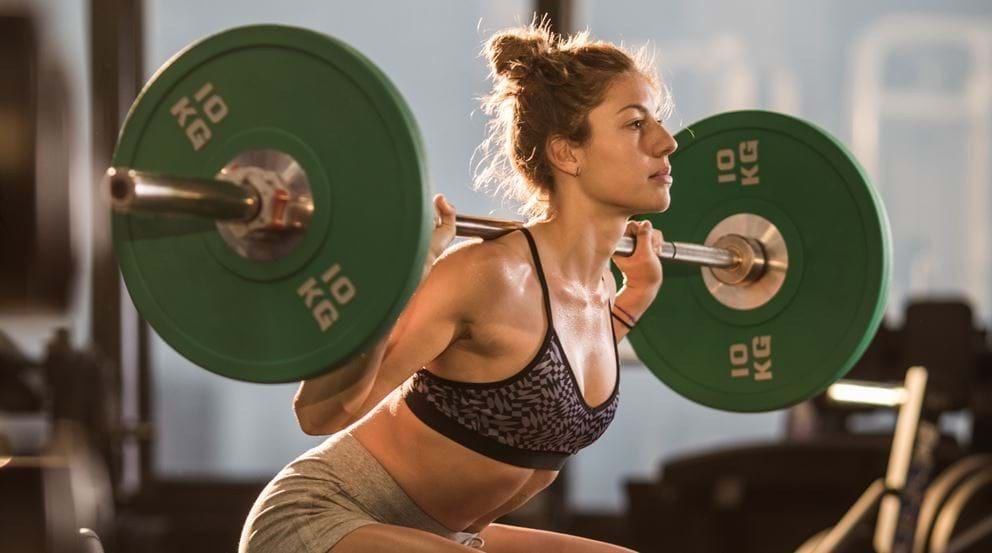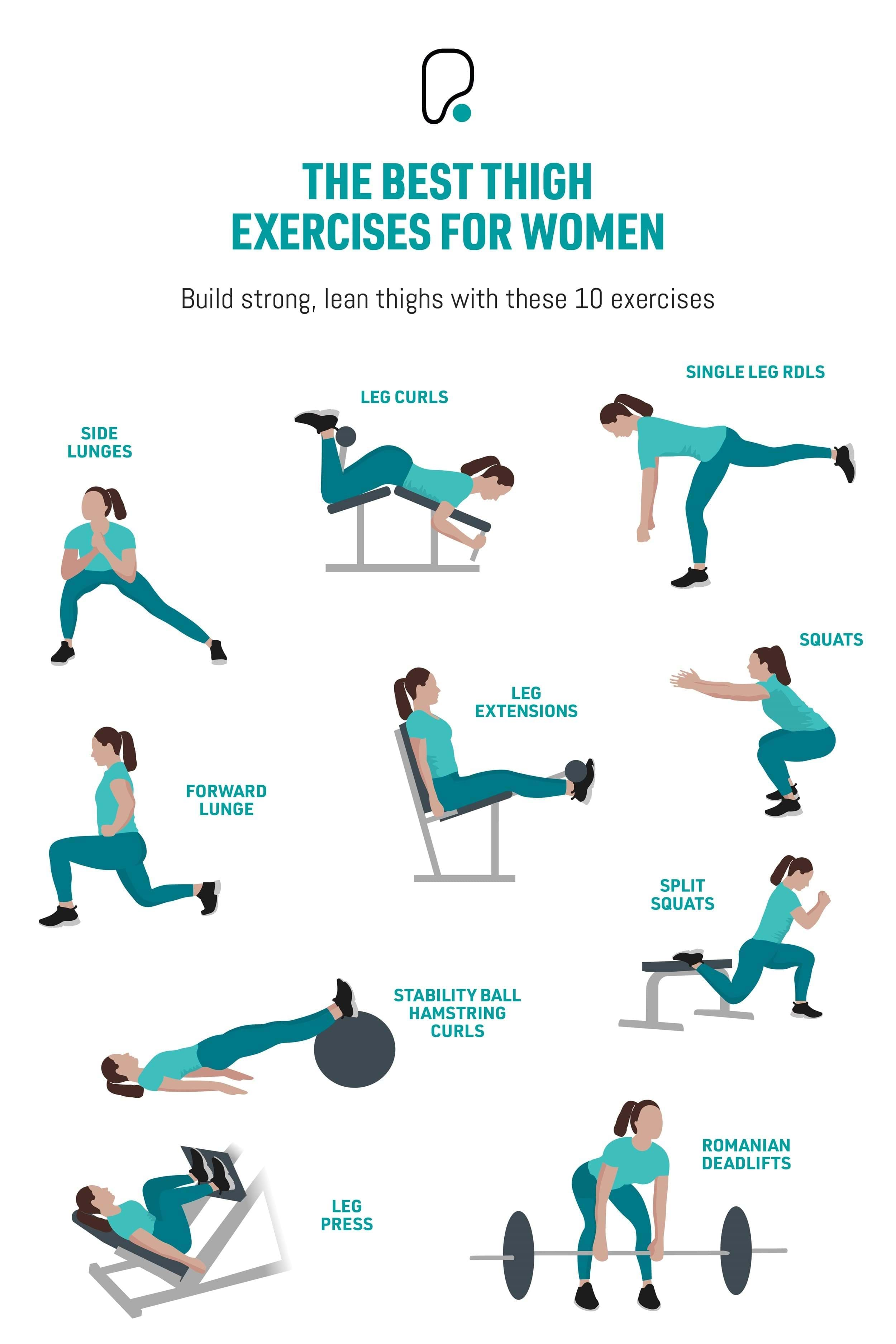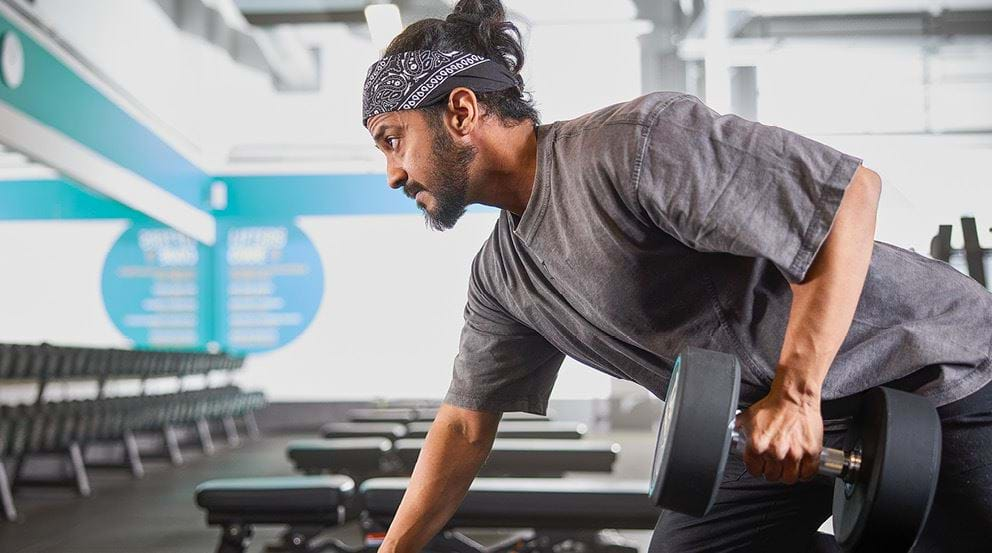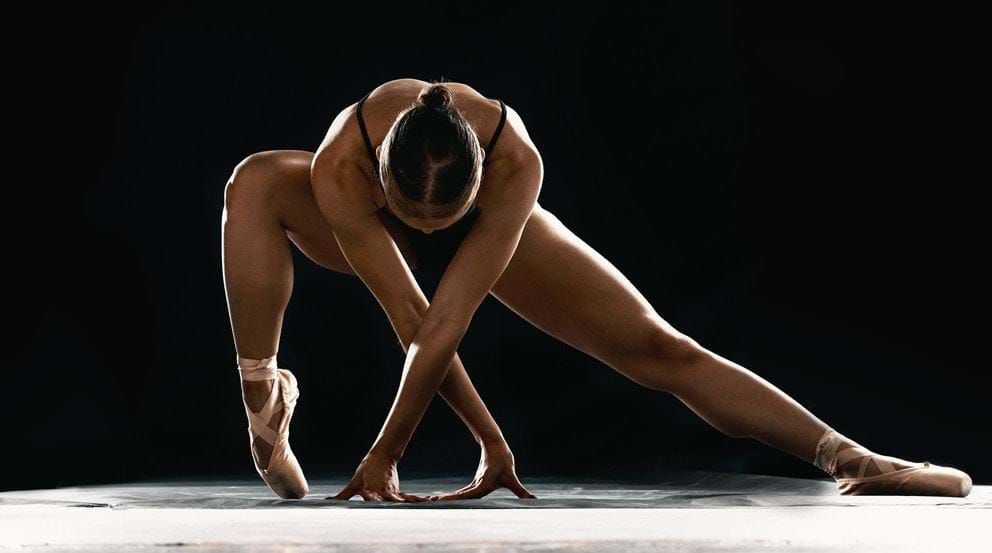Thigh Exercises For Women

What Are The Thigh Muscles | Benefits | How Often To Train | Best Exercises
Page last updated: 11th April 2023
Women's legs have been the subject of workouts for decades, although how they've been targeted have evolved over the years. While thigh gaps were once coveted, thick, strong thighs are currently a goal of many women. While buying into body trends isn't something we recommend, there are actually plenty of benefits to be had from strengthening the thighs.
Here, PureGym Personal Trainer Hayley Chapman looks at why training the upper legs is beneficial, and some of the best thigh exercises for women to try.
What Muscles Are In The Thighs?
The thighs are made up of several muscles that work together to move and stabilise the hips and knees to control lower body movement and stabilise the pelvis.
The three main muscle groups making the bulk of the thigh are:
- Quadriceps. The quads are the group of muscles that sit on the front of your thigh. They are responsible for flexion (bending) of the hips, and extension (straightening) of the knees.
- Hamstrings. The hamstrings are the group of muscles on the back of your thigh. They are responsible for straightening the hips, and bending the knees, and help with rotation of the knees and tilting at the pelvis too.
- Adductors. The adductors are the muscles on the inside of the thigh. They help to bring the thighs towards each other and assist with rotation in the hips and legs.
Benefits Of Thigh Exercises And Workouts
Whether you want thick thighs or thin thighs or have no desire to change your thighs, there are so many benefits to be had from having strong quads, hamstrings, and adductors.
Build strong, toned legs. Spot reducing fat from your thighs (or anywhere) isn't possible, but strength training builds muscle, which can alter the appearance of your thighs. Muscle definition along with low body fat creates the appearance of lean, toned limbs, and building muscle mass can help to create the 'thick thighs' look.
Improve sports performance. The thigh muscles are responsible for a lot of your lower body movement. Stronger quads and hamstrings improve your ability to run, jump, kick, and more, which can help to boost athletic performance.
Improve endurance. The stronger you are, the more you can do without your muscles fatiguing. While this is true in exercise, it's also true in daily activities. Your thigh muscles are involved in key movements every day -- strong legs are needed for walking, climbing the stairs, sitting down, and standing up, and much more. Strengthening the legs makes exercising more accessible and allows you to reap the benefits of being active.
Strengthens the muscles and ligaments. Modern day lifestyle, particularly for those in office jobs, involves lots of sitting, which can lead to tight and weak muscles and tendons. While most muscles in the body are impacted by a sedentary lifestyle, the thighs are particularly affected as they cannot do their job (moving) when sat still all day.
Protects from injury. Having weak, tight muscles puts you at risk for injury as they have little give -- simply overstretching, tripping, or sitting funny can be an injury risk when your muscles are weak. Having strong thighs helps to stabilise and protect the knees and pelvis from injury.
Strengthens bones. Strength training doesn't just strengthen the muscles, tendons, and ligaments. The force created in resistance training also strengthens the bones and improves bone density, and studies have shown that strength training over time helps to reduce the risk of bone loss. This highlights the importance of thigh workouts for women as they are more at risk of bone loss and osteoporosis due to the drop in oestrogen that occurs in the menopause. Our thigh bones bear a lot of weight and impact -- if they are weak, they're much more likely to break during a fall, which is common in older adults.
When And How To Train Your Thighs
Best practice when it comes to strength training is hit each muscle group at least twice a week. There's plenty of ways you could target the thigh muscles:
- Upper/lower workout split. Most upper/lower body workout splits have two upper body workouts, and two lower body workouts. Just make sure each lower body workout works the quads, hamstrings, and adductors and you've worked them twice each week!
- Full body 3-day split. 3-day full body splits have three full body workouts a week. If you have exercises for quads, hamstrings, and adductors in at least two of these workouts, you're good to go!
- Push/pull/legs. A PPL split splits workouts by muscle groups, with two leg sessions a week. Make sure you're including exercises for all three thigh muscle groups in both workouts.
10 Of The Best Thigh Exercises For Women
Below are some of the best thigh exercises to include in your workouts. We've focused mainly compound exercises (exercises which work multiple joints) as these work all three muscle groups, making them an effective way to strengthen the thighs.

Squats
If we had to choose just one exercise as the best exercise for women's thighs, it would be the squat. In addition to working the quads, hamstrings, and adductors, squats work the glutes, hip flexors, calves, and core.
There are multiple squat variations to choose from, but a dumbbell squat or goblet squat are great weighted variations to start with.
Sit-to-stands
Sit-to-stands can be a good squat regression if you haven't quite got the strength or mobility for bodyweight squats. This exercise involves standing in front of a chair with feet shoulder-width apart, and sitting down, and then pushing through the feet up to standing.
Sit-to-stands can be made harder by adding a weight, using a low chair or step, and doing single leg variations.
Forward lunges
Forward lunges are a unilateral exercise which works the quads, hamstrings, glutes, hip flexors, adductors, and core. By challenging each leg individually, it's a great way to improve strength imbalances between the two sides.
For beginners, start with alternating forward lunges and then progress to all reps on the same leg. You can also increase the challenge by holding weights or trying other lunge variations.
Side lunges
Side lunges are one of the best inner thigh exercises for women that also work the quads, glutes, hamstrings, abductors, and calves. The bigger the lunge, the harder this exercise will be, so start with smaller steps! As you become stronger, you can progress to Cossack squats, a similar exercise that starts with the feet apart rather than together.
Split squats
Split squats are another unilateral exercise and are similar to the forward lunge, but the feet position remain fixed. While this can improve the stability of the exercise, it can also increase the 'burn', so you'll want to build these up slowly!
Once you've mastered the split squat with weights, you can progress by elevating your back foot using a box, chair, or bosu ball -- this is known as a Bulgarian split squat.
Romanian deadlifts
Romanian deadlifts, commonly known as RDLs, are a compound exercise that engages all the lower body muscles, but the hamstrings and glutes are the main muscles worked. Deadlifts use a hip hinge to challenge the posterior chain, and it's important to keep your back straight during these movements. If you're new to deadlifting, practice hip hinging without weights first by standing around 1-2 feet in front of a wall and then pushing your hips back until your glutes hit the wall, making sure your knees are soft and back is straight.
Single leg RDLs
Single leg RDLs are the unilateral version of the Romanian deadlift, so they can help to strengthen both legs equally -- in bilateral exercises, it's common for the stronger side to take over and increase strength gaps. Single leg RDLs also improve balance and stability -- if you struggle with these at first, begin by holding onto something until you build the strength and balance to perform unassisted.
Stability ball hamstring curls
Starting in a glute bridge position on a stability ball with your legs out straight and feet resting on top of the ball, bring the ball closer by curling the legs (bending at the knees), making sure to keep your hips raised. This bodyweight exercise is a lot tougher than it looks! You can make it easier by starting with the ball in a corner supported by the walls.
Leg press
The leg press is a resistance machine that replicates the squat while in a seated position. The seat stabilises the upper body and core and takes the guesswork out of form, making the leg press a more beginner friendly exercise than the squat -- just make sure you keep a soft bend in the knee rather than locking your legs out. It also allows for more weight to be moved by the lower body muscles, which is great for building strength!
Leg extensions and leg curls
The leg extension is a quad isolation exercise carried out on the leg extension resistance machine, and the leg curl is a hamstring isolation exercise that are performed on the leg curl resistance machine. In some gyms, these are combined into one machine.
Now you know some of the best exercises for your thighs and how often to do them, it's time to get started -- find your nearest PureGym here!
We've shared more quad exercises here, and some of the best stretches for tight hamstrings here, if you'd like more inspiration. If you're creating a full leg workout, make sure to include some glute exercises and calf exercises too. Or you can always work with a Personal Trainer like Hayley who can create a balanced workout plan!


